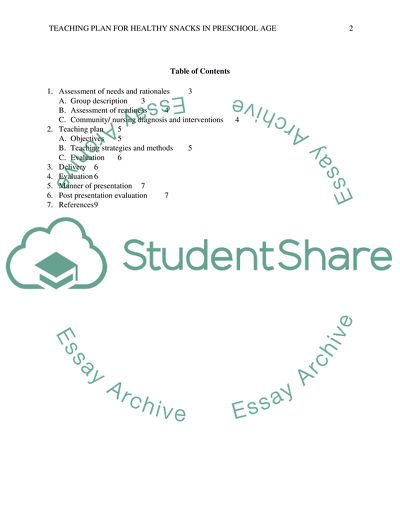Cite this document
(Teaching Plan for Healthy Snacks in Preschool Age: ACCA Day Care in Case Study, n.d.)
Teaching Plan for Healthy Snacks in Preschool Age: ACCA Day Care in Case Study. Retrieved from https://studentshare.org/nursing/1798807-teaching-plan-for-preschool-age-onhealthy-snacks
Teaching Plan for Healthy Snacks in Preschool Age: ACCA Day Care in Case Study. Retrieved from https://studentshare.org/nursing/1798807-teaching-plan-for-preschool-age-onhealthy-snacks
(Teaching Plan for Healthy Snacks in Preschool Age: ACCA Day Care in Case Study)
Teaching Plan for Healthy Snacks in Preschool Age: ACCA Day Care in Case Study. https://studentshare.org/nursing/1798807-teaching-plan-for-preschool-age-onhealthy-snacks.
Teaching Plan for Healthy Snacks in Preschool Age: ACCA Day Care in Case Study. https://studentshare.org/nursing/1798807-teaching-plan-for-preschool-age-onhealthy-snacks.
“Teaching Plan for Healthy Snacks in Preschool Age: ACCA Day Care in Case Study”, n.d. https://studentshare.org/nursing/1798807-teaching-plan-for-preschool-age-onhealthy-snacks.


